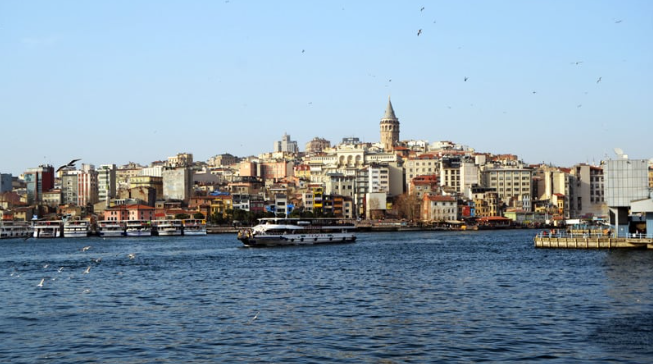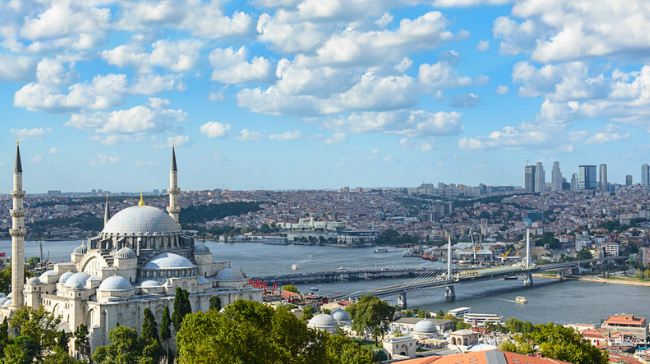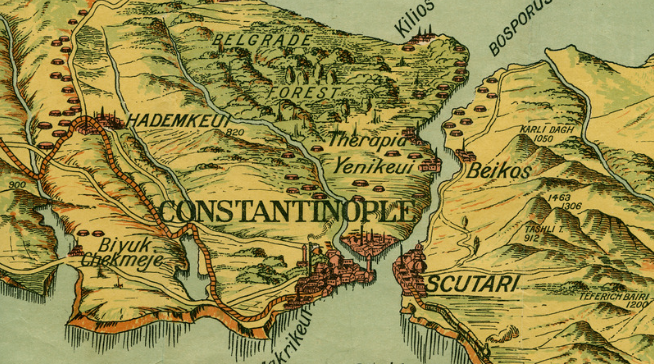When Did Constantinople Become Istanbul
Constantinople was founded in 660 BC, formerly known as Byzantium. It was the eastern capital of the Roman Empire and later the capital of the Byzantine Empire. It had a strategic location on the Bosphorus Strait for controlling trade routes between Europe and Asia.
In 1930 the city’s name changed to Istanbul after Turkey became a republic. The name is from the Greek phrase ‘eis tin poli’ meaning “to the city”. This phrase was used to refer to Constantinople during Ottoman rule.
The city was not always called Constantinople. It had different names, such as Augusta Antonina and New Rome, before becoming Constantinople.
Historians say that the walls around Constantinople were so solid that they were only breached twice during its existence. Once during the Fourth Crusade in 1204 and again by Ottoman Sultan Mehmed II in 1453.
It is interesting to observe how a city’s identity can change over time. From its foundation to various rulers and empires, to the modern-day Istanbul in Turkey. The Ottomans were the masters of empire-building!
The Rise of the Ottoman Empire
To understand the rise of the Ottoman Empire, dive into ‘The Rise of the Ottoman Empire’ section in ‘A Journey Through Time: When Constantinople Became Istanbul.’ As you read, you will come across two sub-sections – ‘The Siege of Constantinople’ and ‘The Renaming of the City to Istanbul.’ These sub-sections provide solutions to how the Ottoman Empire ascended to power and their impact on the city formerly known as Constantinople.
The Siege of Constantinople
The fall of the Byzantine capital has been remembered throughout history. The Siege of Istanbul was one of the most remarkable moments in world history. Many did not think it would be successful. But, as time went on, it became clear that the civilians and defenders would not be able to prevent Sultan Mehmed II’s dream of conquering Constantinople.
The Ottoman Empire was making its way to the city, led by Constantine XI. For three months, the Greeks fought with no weapons. But, their courage made them hold off the Ottomans. In the end, they lost their ground, but only after taking twenty or so breaches in the wall defense.
Mehmed II’s tactics and newfound bravery from the cannon masters allowed his army to win. This is still seen as one of the most courageous stands against dominance. It shows what a city can do when changing its name is the least of its conquests.

The Renaming of the City to Istanbul
The City underwent a major change when its name was changed to Istanbul. This marked the end of an era and the start of a new one. The renaming happened as part of the Ottoman Empire’s transition. Emperor Mehmet II changed the name from Constantinople to Istanbul after two months of siege.
This renaming had massive symbolic meaning. It represented more than a new name. It was an official declaration by Mehmet II that he would transform his empire and create a powerful center for arts, sciences and culture. Istanbul’s location allowed it to be an Eastern and Western hub for trade.
The name Istanbul is from Greek roots. It means ‘into the City’. The Ottomans picked this name because it fit their vision of building a political and cultural epicenter. They wanted their own identity, not the shadow of past realms.
Renaming Constantinople was part of Mehmet II’s plan for modernity. He created structures like Topkapi Palace, hired artists and scholars, and formed trade links with Europe and Central Asia.
This Renaming began an evolution in Ottoman culture. It inaugurated a golden age of innovation. It paved the way for advancements and achievements in literature, science and technology.
The Ottomans showed that a good rebranding can be great – just ask Prince who changed his name to a symbol.
The Impact of the Renaming
To understand the impact of the renaming of Constantinople to Istanbul, delve into how the city underwent significant changes and developments, shaping its language, culture, and modern-day character. This section explores two sub-sections, ‘Changes in Language and Culture’ and ‘Modern-Day Istanbul,’ highlighting the lasting influence of the renaming on various aspects of the city’s identity.
Changes in Language and Culture
Recent renaming has caused major shifts in both language and culture. This change is helping create a more inclusive environment, with words being used to build understanding between groups. Companies are also restructuring their branding strategies around this. Moreover, dominant cultures are now acknowledging and embracing the values of marginalised cultures, and the media is highlighting them too.
It’s essential to comprehend how language impacts culture, as it can determine what is accepted and not. According to Forbes, inclusive companies are more likely to produce innovative solutions. Welcome to modern-day Istanbul, where the only thing that stayed the same is the traffic!

Modern-Day Istanbul
Gone is Constantinople, and in its place stands Istanbul! The Turkish Government’s 1930 renaming of the city had a massive effect on its cultural identity. It signified Turkey’s transition from the past into a modern nation-state.
Urban expansion, industrialization, and infrastructure upgrades boomed, bringing higher living standards and economic growth. Creative youth, entrepreneurs, and intellectuals were drawn in by the city’s transformation and innovation.
Despite all the progress, Istanbul still faces issues like overcrowding and traffic jams. Strategic planning is needed to tackle these issues. Investing in alternative transport solutions like mass transit systems or bike lanes could help reduce congestion and improve air quality. Plus, restoring historic sites would showcase Istanbul’s heritage and boost tourism.
Conclusion: Constantinople’s Legacy in Istanbul
The ties between Constantinople and Istanbul are clear. You can see it in the city’s culture, architecture, and history. The legacy of the former capital of the Byzantine Empire is everywhere. The Hagia Sophia is a prime example. Before it became a museum, it was a church then a mosque. The Blue Mosque, too, speaks to both the city’s past and Islamic roots.
Even food has Constantinople’s influence. Turkish delights have names that come from the Byzantine era. Think baklava and galaktoboureko—these desserts have recipes from centuries ago.
Plus, there’s much more than just the famous sites. Wander around, explore winding streets, find forgotten churches. There’s always something to discover.
Experience this journey through time and learn about two empires’ legacies in Istanbul. Only then will you truly get why it’s so unique.



